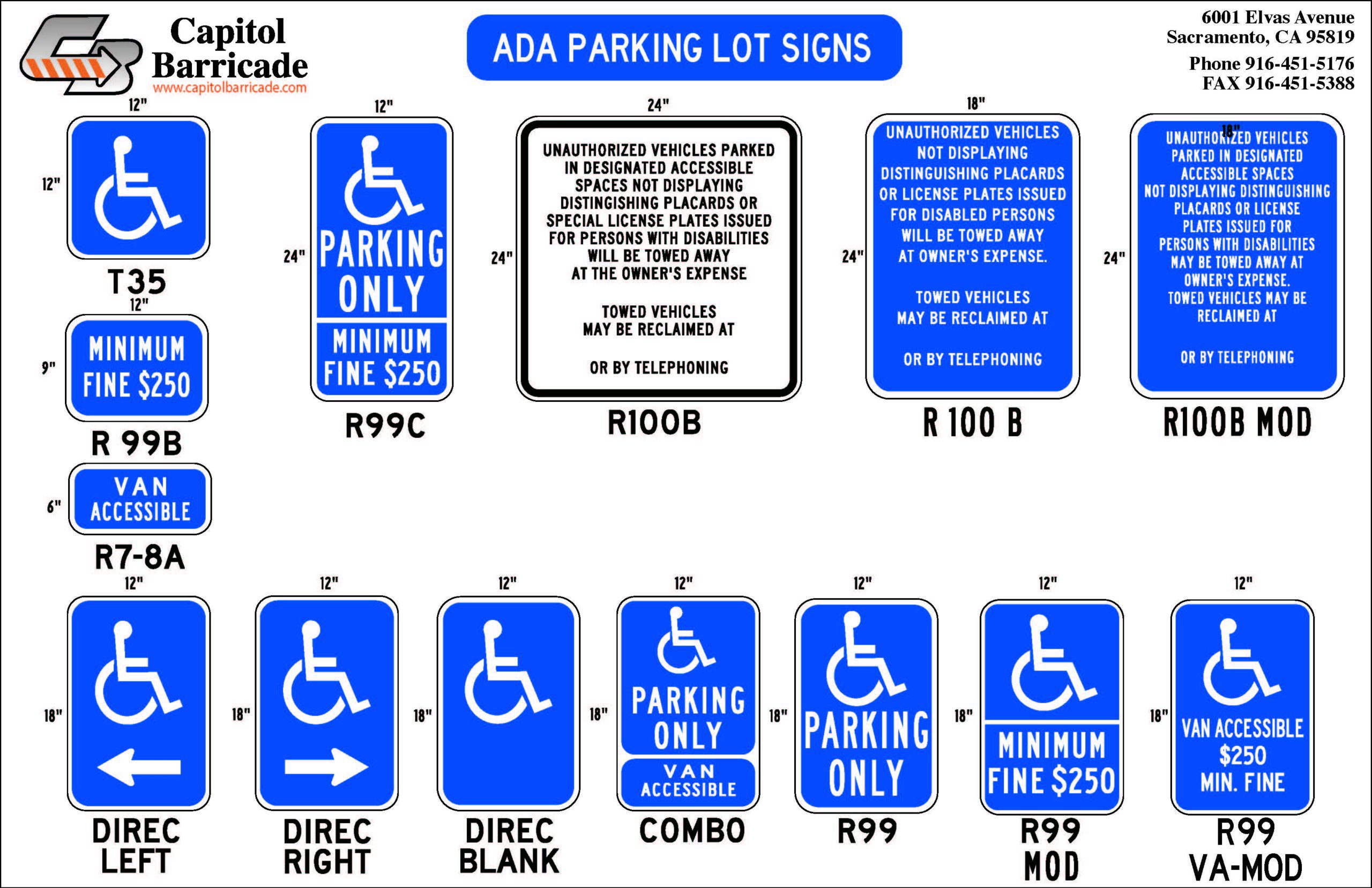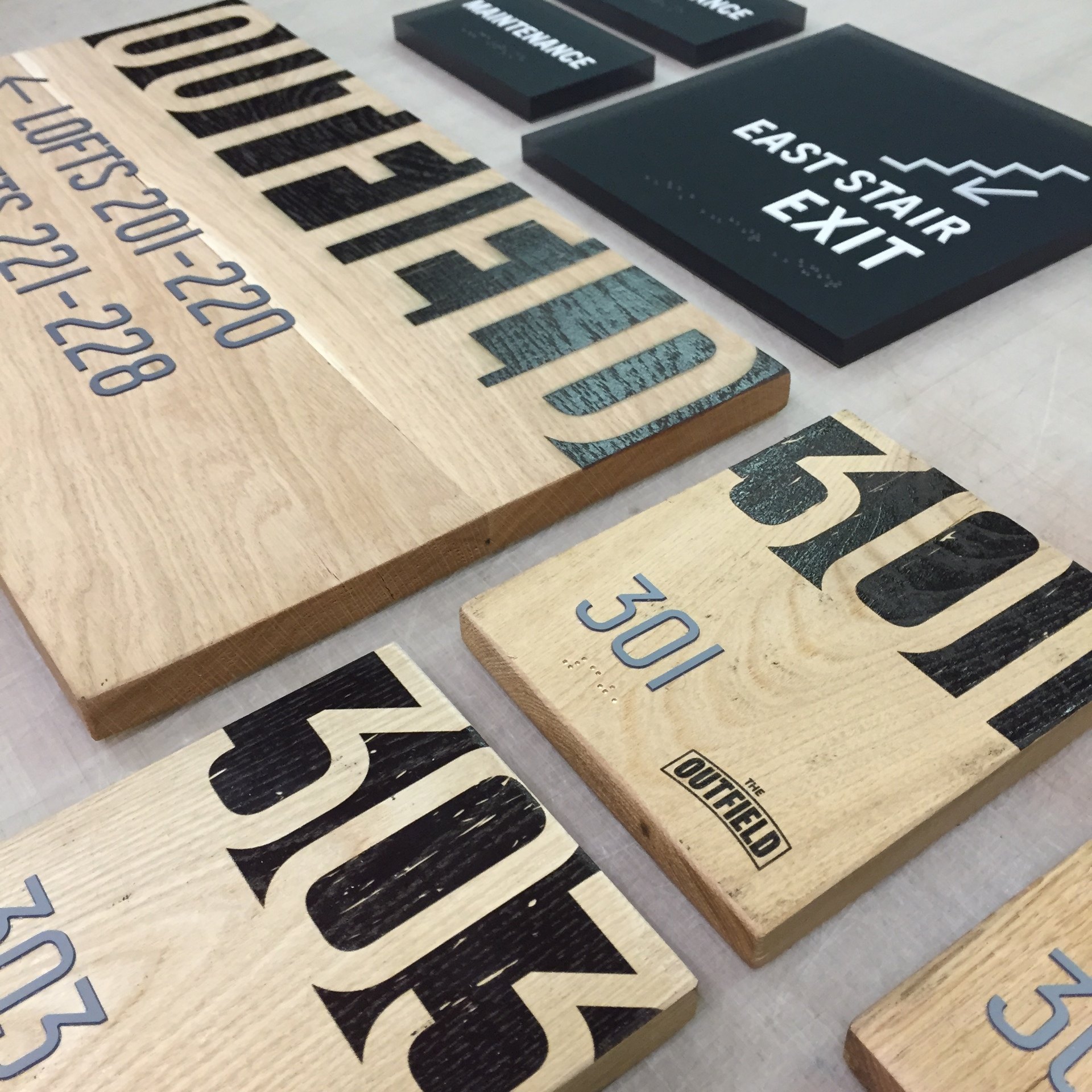The Benefits of Using Premium ADA Signs in Your Service
The Benefits of Using Premium ADA Signs in Your Service
Blog Article
Checking Out the Secret Functions of ADA Indications for Improved Ease Of Access
In the realm of availability, ADA signs offer as quiet yet powerful allies, making certain that areas are navigable and comprehensive for people with disabilities. By incorporating Braille and tactile components, these indications damage barriers for the aesthetically damaged, while high-contrast color systems and clear font styles provide to diverse aesthetic demands.
Significance of ADA Conformity
Ensuring compliance with the Americans with Disabilities Act (ADA) is important for cultivating inclusivity and equal access in public rooms and workplaces. The ADA, passed in 1990, mandates that all public centers, companies, and transportation services fit people with disabilities, ensuring they take pleasure in the very same rights and opportunities as others. Compliance with ADA criteria not just meets legal responsibilities yet additionally boosts an organization's credibility by showing its dedication to variety and inclusivity.
One of the key facets of ADA conformity is the execution of obtainable signs. ADA indications are created to make sure that individuals with impairments can easily browse via spaces and structures.
Additionally, sticking to ADA policies can reduce the risk of legal consequences and potential penalties. Organizations that fall short to comply with ADA standards may face penalties or legal actions, which can be both harmful and economically burdensome to their public image. Therefore, ADA conformity is integral to cultivating an equitable atmosphere for every person.
Braille and Tactile Elements
The unification of Braille and responsive elements into ADA signage symbolizes the concepts of access and inclusivity. It is typically put underneath the matching message on signs to make certain that people can access the information without visual assistance.
Tactile aspects extend beyond Braille and include raised characters and icons. These parts are created to be noticeable by touch, enabling individuals to identify room numbers, toilets, leaves, and various other essential locations. The ADA establishes details standards regarding the size, spacing, and positioning of these responsive components to maximize readability and make certain uniformity across different settings.

High-Contrast Shade Plans
High-contrast color design play an essential role in boosting the exposure and readability of ADA signage for people with visual problems. These plans are vital as they optimize the difference in light reflectance in between text and background, making certain that indications are easily noticeable, even from a range. The Americans with Disabilities Act (ADA) mandates the use of certain color contrasts to fit those with limited vision, making it a critical element of compliance.
The effectiveness of high-contrast shades hinges on their capacity to stick out in various illumination problems, including poorly lit environments and locations with glare. Commonly, dark text on a light history or light message on a dark history is employed to achieve ideal comparison. Black message on a white or yellow history offers a hop over to these guys plain visual difference that aids in fast acknowledgment and comprehension.

Legible Fonts and Text Dimension
When considering the design of ADA signs, the selection of understandable typefaces and appropriate message dimension can not be overstated. The Americans with Disabilities Act (ADA) mandates that fonts must be sans-serif and not italic, oblique, script, highly attractive, or of uncommon form.
According to ADA guidelines, the minimum message height should be 5/8 inch, and it must enhance proportionally with watching range. Consistency in message size adds to a cohesive aesthetic experience, helping check out here individuals in browsing environments successfully.
Additionally, spacing in between lines and letters is essential to readability. Appropriate spacing prevents personalities from showing up crowded, improving readability. By adhering to these criteria, designers can substantially boost accessibility, making sure that signs serves its desired purpose for all people, despite their aesthetic capabilities.
Efficient Positioning Strategies
Strategic positioning of ADA signs is necessary for making the most of availability and making sure compliance with legal standards. ADA standards specify that signs should be placed at an elevation between 48 to 60 inches from the ground to ensure they are within the line of view for both standing and seated people.
In addition, indicators need to be placed surrounding to the lock side of doors to enable simple identification prior to entrance. This placement aids people situate rooms and rooms without obstruction. In cases where there is no door, signs must be located on the nearest surrounding wall surface. Consistency in indicator positioning throughout a center enhances predictability, reducing complication and improving total individual experience.

Conclusion
ADA indicators play an important role in advertising ease of access by incorporating attributes that address the requirements of people with specials needs. Incorporating Braille and tactile aspects makes certain crucial info is obtainable to the visually damaged, while high-contrast color design and clear sans-serif font styles improve presence across various illumination problems. Efficient positioning approaches, such as appropriate mounting heights and calculated areas, better help with navigating. These components jointly cultivate a comprehensive environment, underscoring the value of ADA conformity in ensuring equal access for all.
In the world of ease of access, ADA signs serve as silent yet powerful allies, guaranteeing that spaces are accessible and comprehensive for individuals with impairments. The ADA, enacted in 1990, mandates that all public centers, companies, and transportation solutions suit people with disabilities, guaranteeing they appreciate the exact same rights and chances as others. ADA Signs. ADA indications are created to ensure that individuals with handicaps can quickly navigate via rooms and buildings. ADA guidelines specify that indicators ought to be mounted at an elevation between 48 to 60 inches from the ground to guarantee they are within the line of sight for both standing and seated individuals.ADA signs play an essential function in advertising availability by integrating functions that check this site out attend to the requirements of people with impairments
Report this page